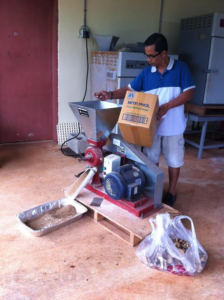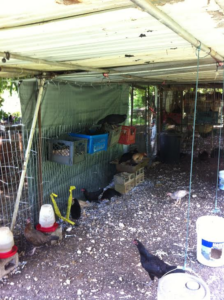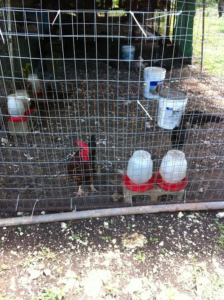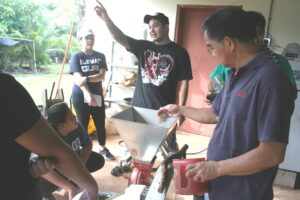2016 Annual Report for FW16-015
From Peewee to Large Eggs
Summary
The conventional way of bringing in day-old layer chicks from Hawaii and raising and feeding them with commercial poultry feeds did not advance the layer industry on Guam. At present, it is even more difficult to bring in day-old chicks because of the current poultry disease situation in the US mainland. My local, native hen populations are laying peewee eggs due to their small body size. There is no market for peewee to small size eggs. This grant will look into the integration of upgrading the local chicken population and maximizing use of local feed materials. Thirty local hens and two purebred Rhode Island Red roosters were placed in a poultry facility to produce crossbred pullets (CP). Commercial layer feeds were supplemented with taro and Moringa leaves. In the month of August, thirty chicks were hatched through natural brooding. These chicks are now 3 months old and being raised in another facility. They seem to be bigger and growth rate is faster compared to the local pullets. A batch of hatching eggs is being incubated.
The demonstration site will be open to the community, schools and regional visitors. At the beginning of the grant, a list of contacts with e-mails, Facebook accounts will be established so updates, pictures and progress of the grant activities will be sent to them. Flyers and poster board will be produced and will be distributed during agricultural fairs and field days. Additional phase of this grant would be to further upgrade the hybrid pullets for better performance and production.
Objectives/Performance Targets
- To upgrade the genetic make-up of local pullet and hen population for egg production. This will transform to larger local eggs and meatier hens for sale upon culling.
- To demonstrate a low input small-scale egg production for family consumption and sales for extra income.
- To educate poultry producers to rely more on local resources relative to poultry production. Demonstration site will be open for visit from the community and schools.
- To promote use of multi-purpose plants such as pigeon pea as animal feed and as soil-enriching qualities.
- To promote food sustainability and security in the region.
Accomplishments/Milestones
In July 1, a chicken facility was constructed to accommodate 30 “local” hens. Feeders and waterers were made out of used 5 gallon buckets. Three openings were made on the sides of the bucket for the chickens to access feed and water inside the bucket. Nests were placed four feet above the ground.
After two weeks, two purebred Rhode Island Red roosters were added to the hens in the facility. This is to makes sure all eggs laid were fertilized by the Rhode Island Red roosters.
- A total of 30 day-old chicks were hatched in August. These chicks are now 3 month old pullets and cockerels.
- The hens continue to lay hatching eggs. Seventeen eggs are currently being incubated.
- Taro and Moringa were used as local feed supplements to commercial layer feed. Samples have been prepared for nutrient analysis.
- Fifty pigeon pea plants have been planted and should be bearing pods early next year to supplement the feeds.
- Mr. Coloma posted photos and video of the grant in his Facebook website.



Impacts and Contributions/Outcomes
- Adding processed local feeds (taro and Moringa) reduces commercial feed by 25% .
- The crossbred pullets are bigger in size compared to the local pullets.
- The grant was included in the laboratory activities of nine students enrolled in AG 211 this Fall Semester 2016 . They learned about the upgrading program and the processing of local feeds.
